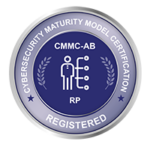
By: Brian Egenrieder, CRO, SyncDog
Over the last decade, the concept of working away from the traditional office environment has become more common. In 2016, approximately 43% of employees worked remotely on occasion. The onset of COVID-19 has drastically changed this. An April 2020 survey found that 42% of people are working from home full-time. This transition actually aligns well with the workforce’s preferred work arrangement. A poll conducted last year found that 82% of people wanted “to work from home at least one day per week.” Fortunately, we as a society are at the point where we have a plethora of technology at our fingertips to make this transition not only possible, but permanent.
The Employee POV on WFH
PJs. Pets. No commute. These are a few of their favorite things. Comforts aside, a recent survey found that professionals who work from home felt more focused and productive compared to their experience working in an office environment. As far as security is concerned, specifically in the context of the pandemic remote work transition, employees felt their companies had mixed success with maintaining and implementing security measures; in some cases, companies loosened certain protocols while strengthening emphasis on others.
Why Securing Remote Employees Matters
Humans are notoriously the weakest link in a company’s cybersecurity threat vector. Typically due to security mishaps like clicking on phishing scams. This is iterated in dozens of industry thought leader articles, like this CIO piece, which points out that security training can educate employees, otherwise unaware, about corporate data vulnerabilities and threats.
Away from the security of an office network, a remote work team expands the attack surface. This includes through home networks, teleworking applications, malicious links positioned as topical information, misconfigurations, and more. For these reasons it is critically important to find the right data security solution.
Leadership & Mobile Security Concerns
As employees themselves, leadership team members have the added responsibility of managing people from afar and adapting workflows and processes. One of the biggest concerns with remote work is security. There is a misconception that adopting security technology is time intensive and cumbersome. When the right tools are chosen to get the job done, that isn’t the case. Say you have employees using personal phones to conduct business — emails, video calls, instant messaging, etc. An encrypted containerized application workspace, such as Secure.Systems, could be deployed across your entire organization within minutes; successfully separating corporate and personal data on employees’ devices and securing it at rest, in use and in transit. This solution addresses concerns of not secure operating systems, vulnerable applications, and data loss prevention among others.
___
It is evident that working from home may well be the new normal for companies of all sizes. With that in mind, taking into account both employee and leadership perspectives on working from home and how to best embrace this workforce format is highly important.
To learn more about Secure.Systems and how it can be used to secure your teams working from home, please get in touch!
